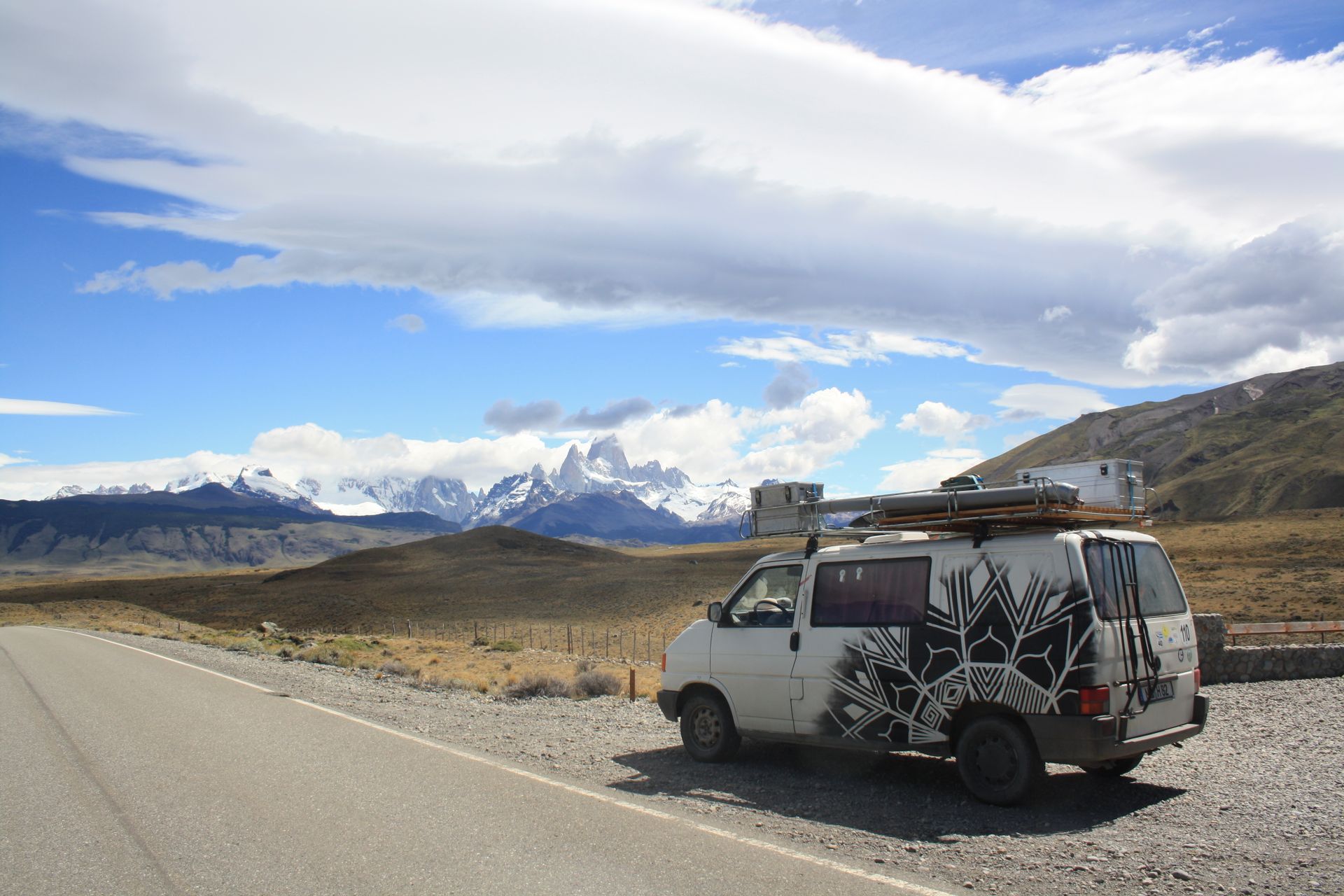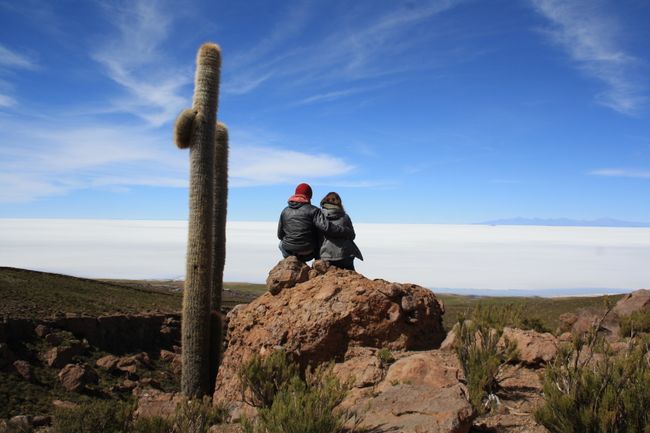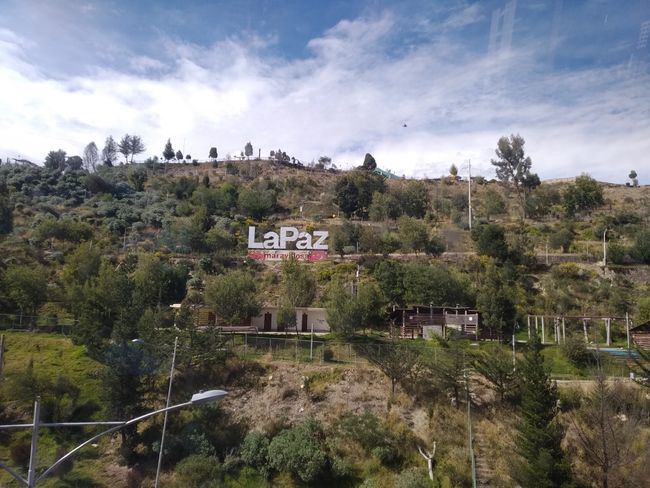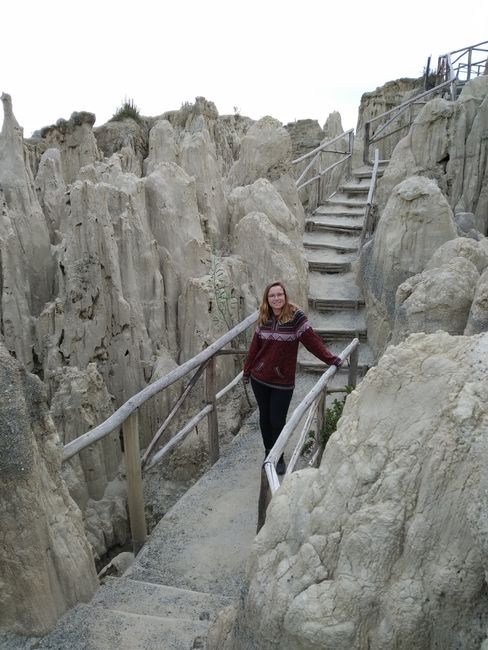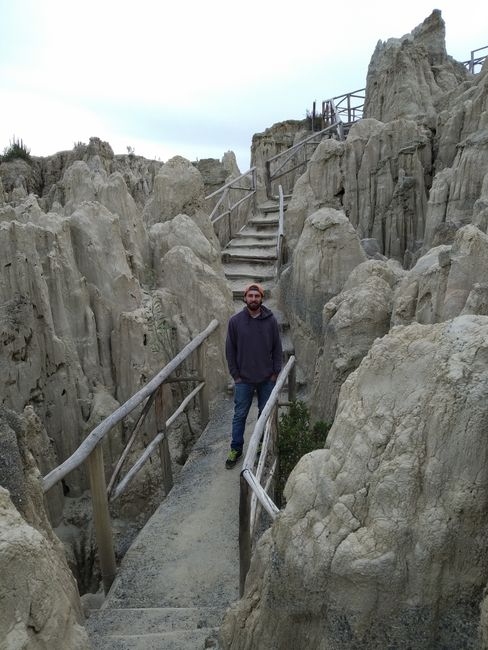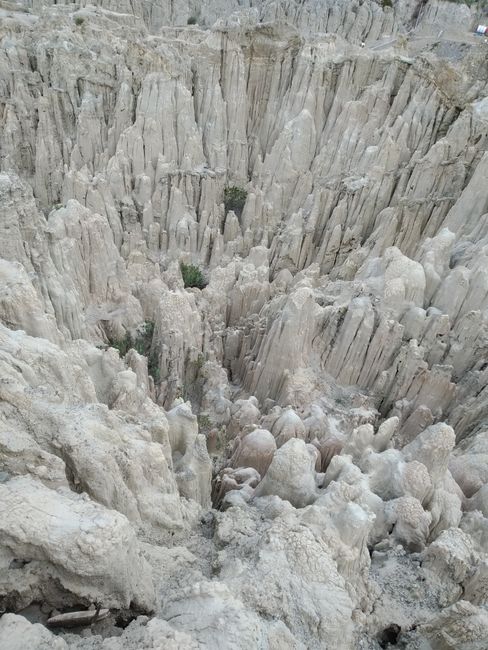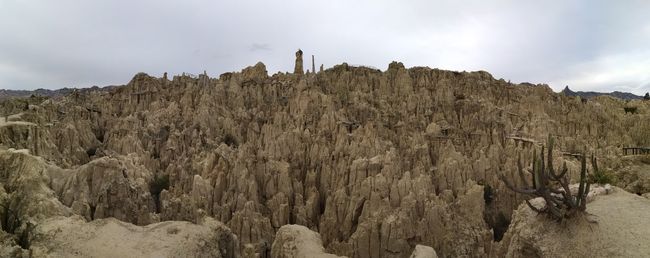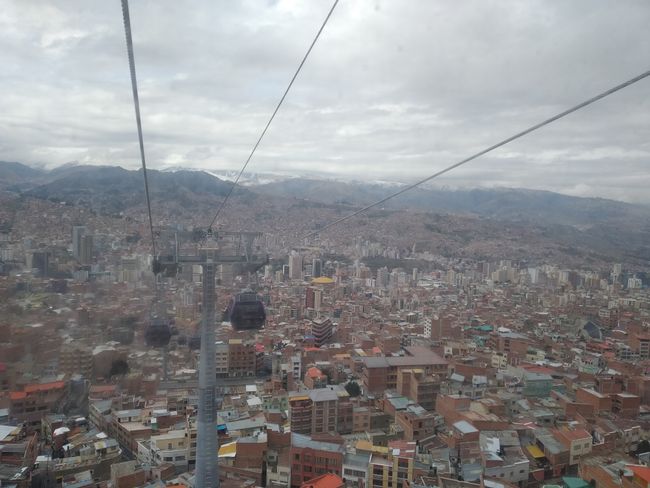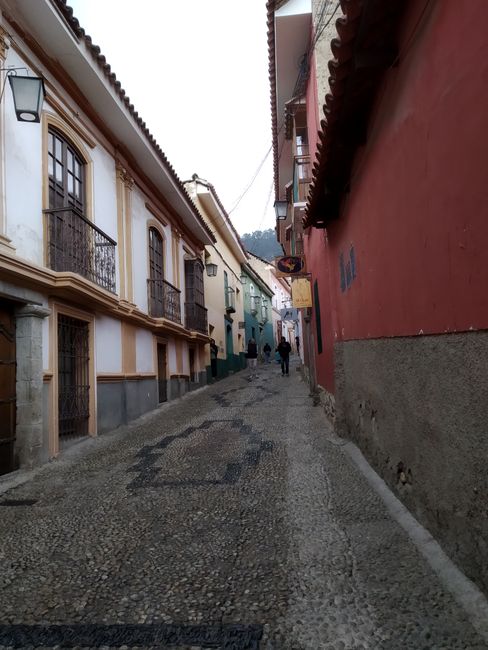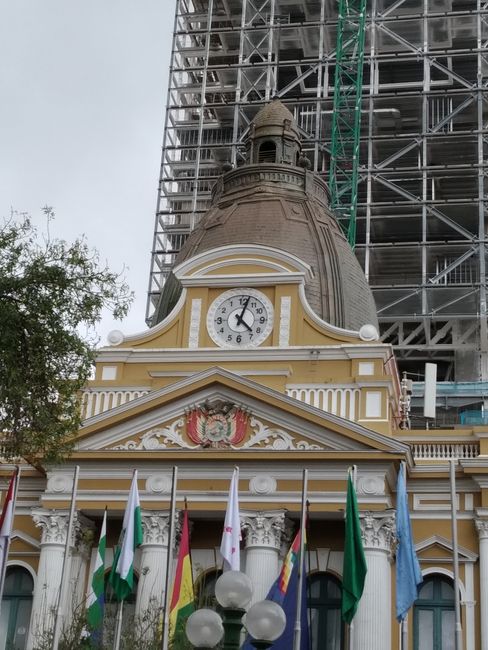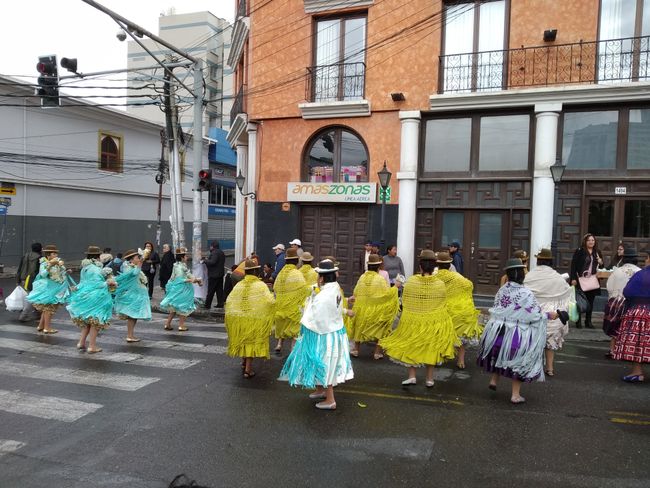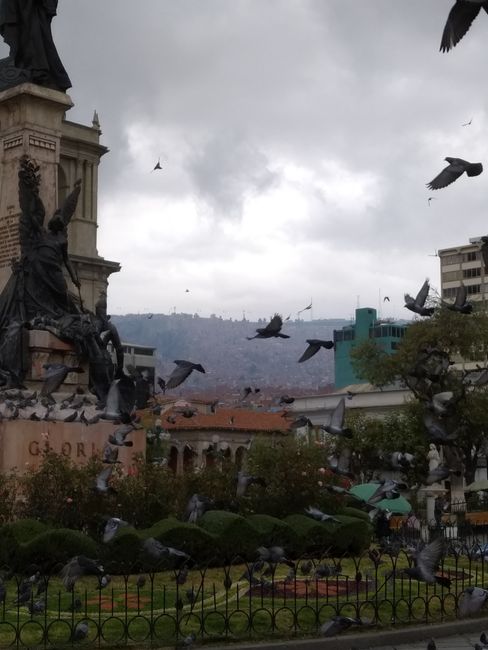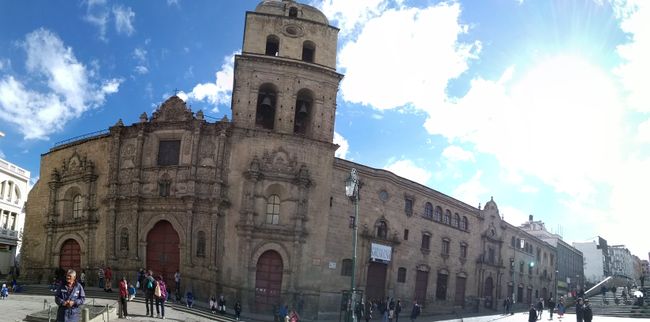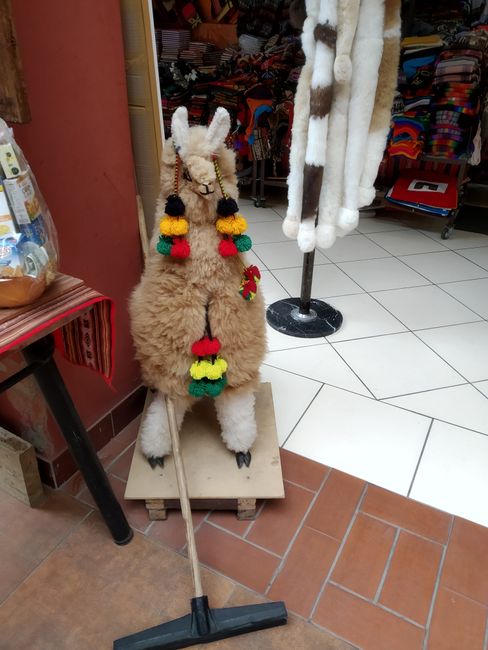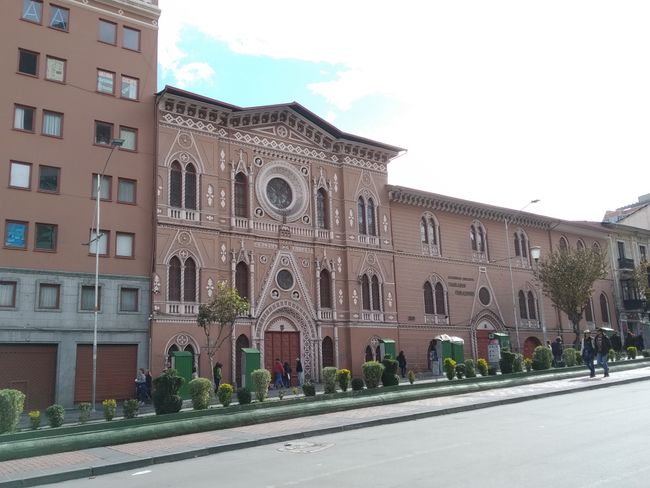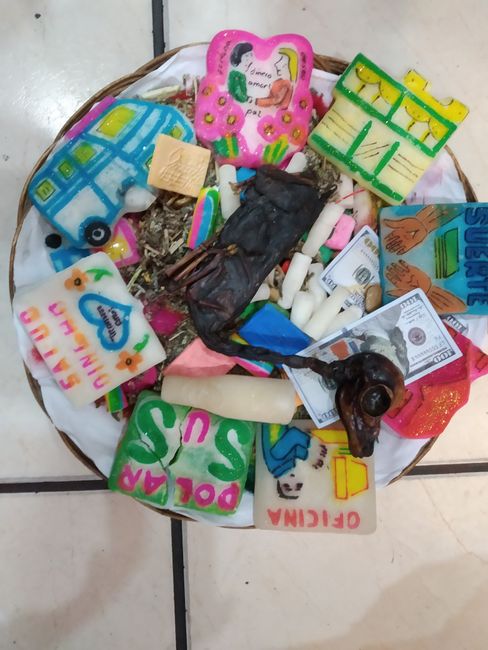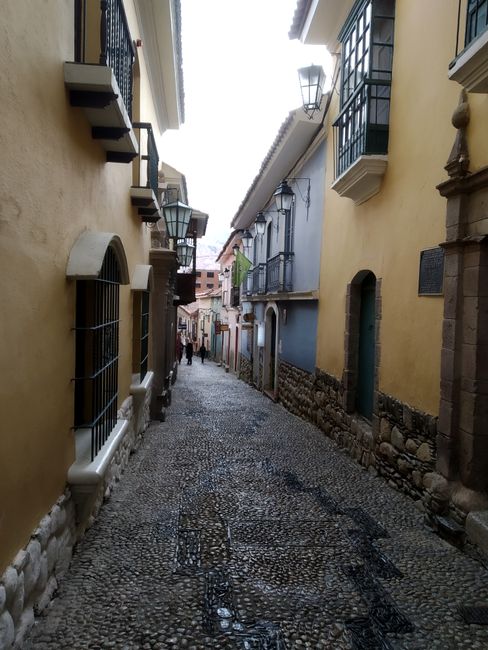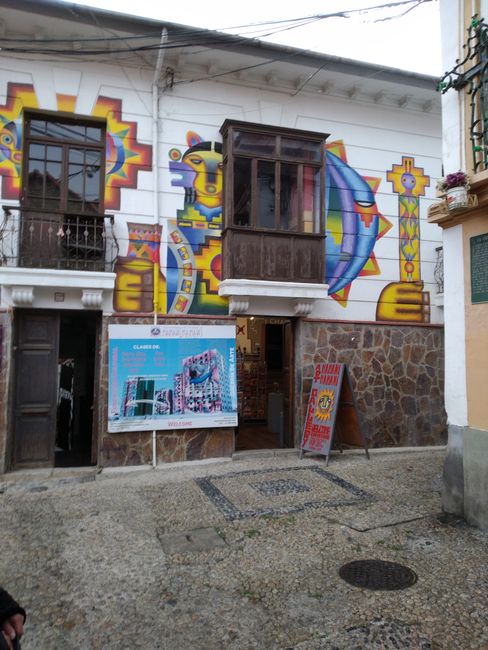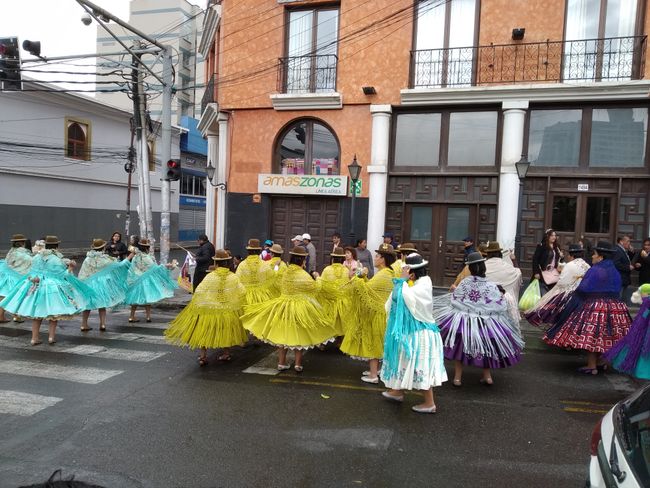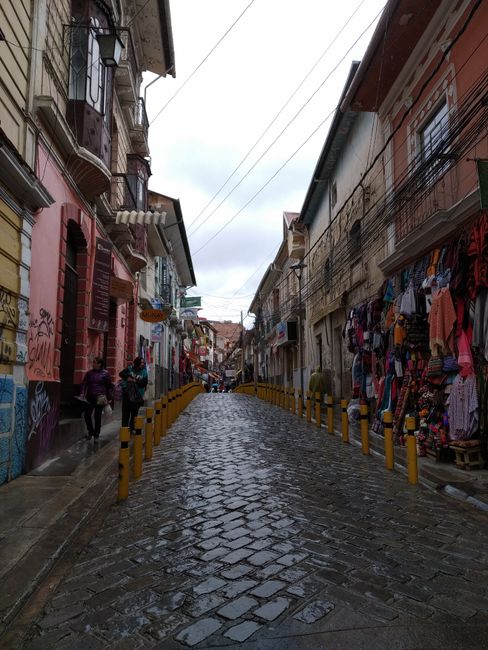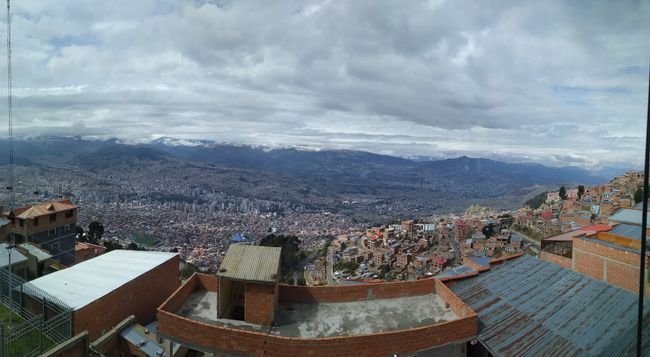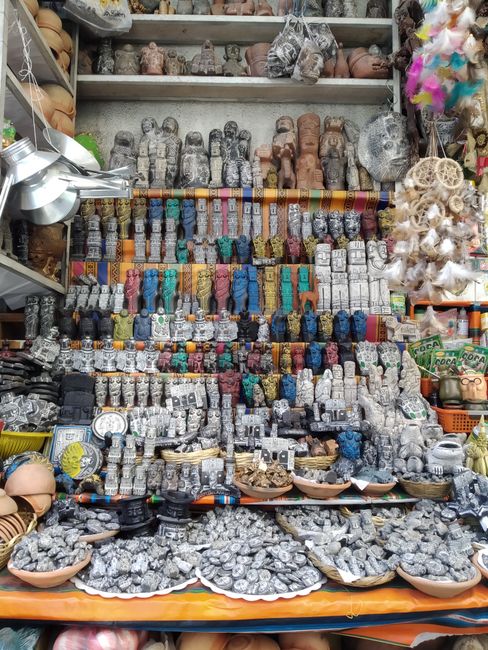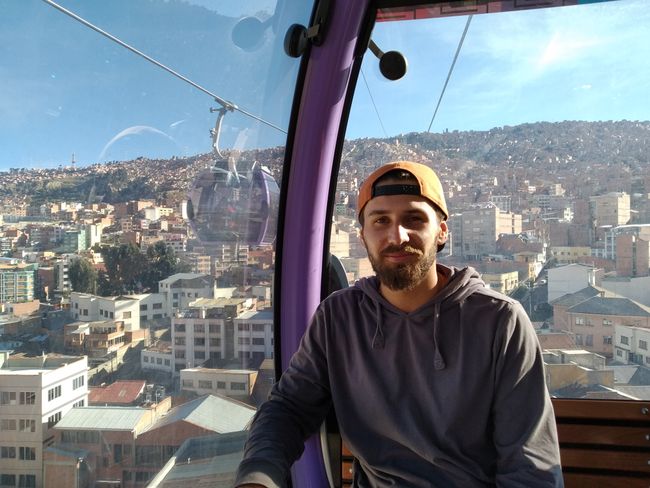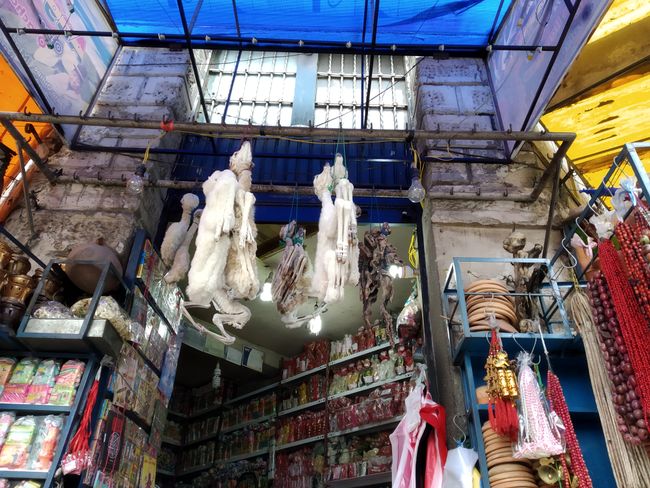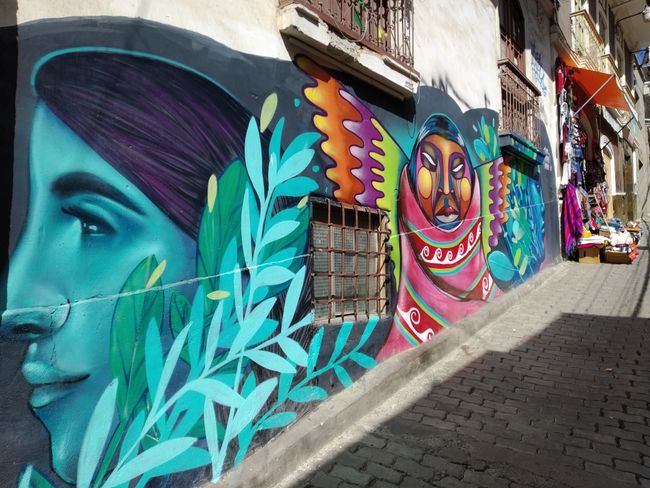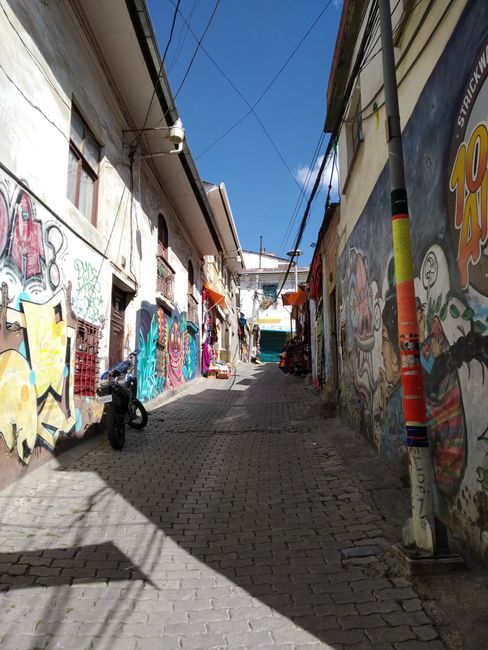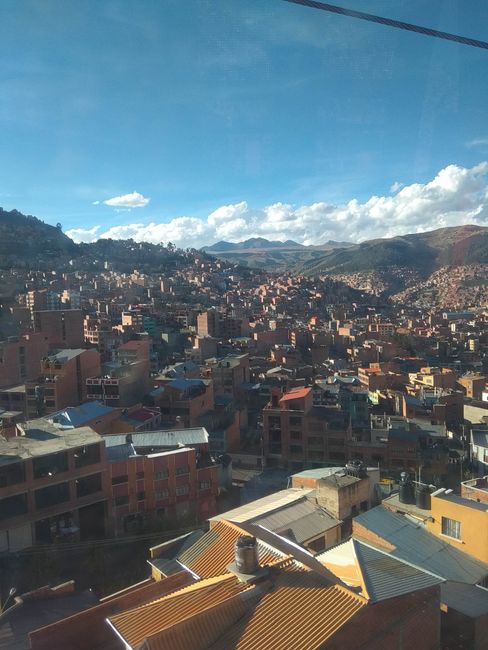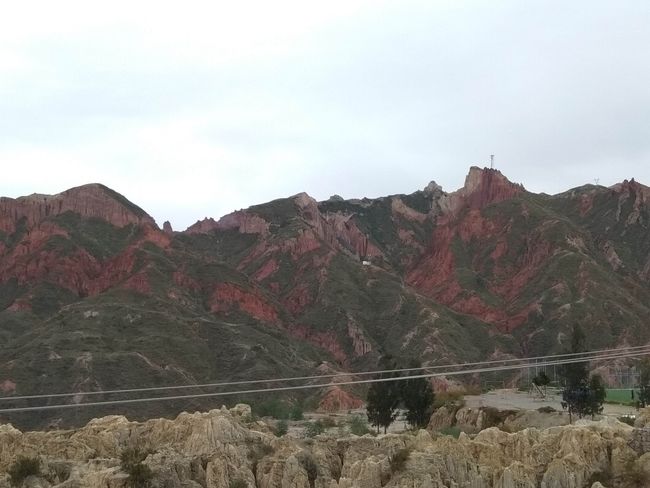La Paz
Publisert: 22.05.2019
Abonner på nyhetsbrev
After 3 weeks at 'normal' altitudes, we were a bit concerned about going back to 4000 - 3600 meters above sea level. Fortunately, our bodies remembered these conditions and we were spared from altitude sickness. However, climbing stairs and other activities are still quite exhausting.
La Paz is definitely more touristy, but there is also a lot to do here. We really liked the city itself. The best part was that we weren't constantly stared at; people in Santa Cruz are always amazed when they see us ;-). We also met other travelers whom we could complain to about our sorrows.
During a city tour, we were also explained about the customs and religion here. Before the Spaniards invaded, the population had their own gods. After the Spaniards, this belief mixed with Catholicism. The people here are generally very religious. For example, when we pass by a church on the bus, everyone crosses themselves (we always look a bit strange). This, mixed with indigenous beliefs, is interesting. The most important deity is Pachamama, which you hear everywhere and means 'Mother Earth'. Pachamama likes alcohol, meat, and coca leaves. That's why when Bolivians open a bottle of beer, they first pour a sip on the ground because the first sip is for Pachamama. There are also ceremonies where you can ask Pachamama for possessions. A bowl is filled with coca leaves, then salt (because of the Salar de Uyuni), and pressed figures in the shape of the possessions (dollars, house, car, etc…) are added, followed by talismans and most importantly: a dried baby llama. We have gotten used to this sight; they are hanging everywhere. The llama represents the Andes, as Pachamama resides in the mountains. The entire structure is sprinkled with high-proof alcohol and then set on fire. Here's the important part: if the smoke is white, it worked; if not, then not. Similar customs exist for weddings, house construction, etc…
So, the indigenous population explains everything with its deities and believes that everything happens for a reason. I personally find it very beautiful that despite their harsh lives, they still have such strong faith in Pachamama.
Since 2014, the city has had an additional attraction. There are cable cars that connect the neighborhoods on the hills with the city center from above. A ride costs 2 Bolivianos (about 30 cents) and you can enjoy a peaceful view of the city from above. We enjoyed the peace in the mega-city and rode almost all the lines.
By the way, La Paz is translated to mean 'peace', which makes you smile a bit: protests happen here 6 out of 7 days a week. The situation is currently quite tense: President Evo Morales has been in office for 13 years. But let's take a brief look back at history: Bolivia hasn't existed for that long. It was founded by the freedom fighter Simón Bolívar after the liberation from the Spaniards, so that the indigenous population would have its own country. After its formation, Bolivia suffered several setbacks: almost every neighboring country took back a part of Bolivia, the worst being Chile taking control of the access to the sea, a conflict that still exists today. in 2003, there was a major crisis and the president fled into exile in the USA. The president who followed had his hands full with rebuilding the government but neglected the people and was overthrown. With 54% of the votes, Evo Morales, the first president of indigenous descent, was elected.
He managed to introduce programs against poverty and Bolivia is currently experiencing a real economic boom. However, his fame is getting to his head a bit: according to the constitution, a president can only serve for two terms (4 years each), but since he wants to continue ruling, he simply changed the constitution, giving him another 4 years, and now he wants to do it again. People think Evo Morales' time is up, which is why there are currently many demonstrations in La Paz.
Three weeks ago, La Paz experienced heavy rains, causing a landslide in the middle of the city that swept away about 45 houses. The cleanup is still ongoing and 4 people are still missing. We rode the cable car over it, and it was such a massive piece of land, it's really hard to imagine.
On our last day, we took a detour to Valle de la Luna (Moon Valley). Here, many white columns rise from the ground, almost better than in San Pedro de Atacama.
Abonner på nyhetsbrev
Svar (1)
Ninjo
"Letzter Tag..." heisst das Egon ist wieder am Start? Die politische Unruhe haben wir hier in EU mitbekommen. Hauptsache ihr kommt ohne großes Theater wieder aus Bolivien raus. Insgesamt ein schöner Bericht.
Reiserapporter Bolivia
